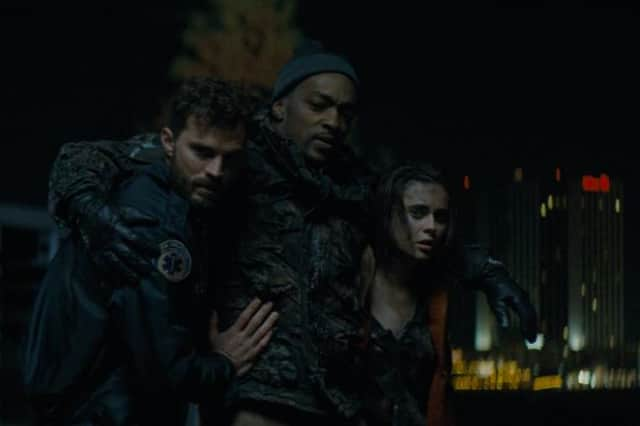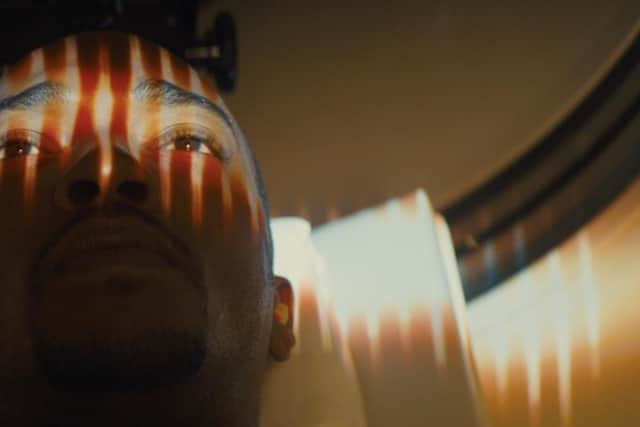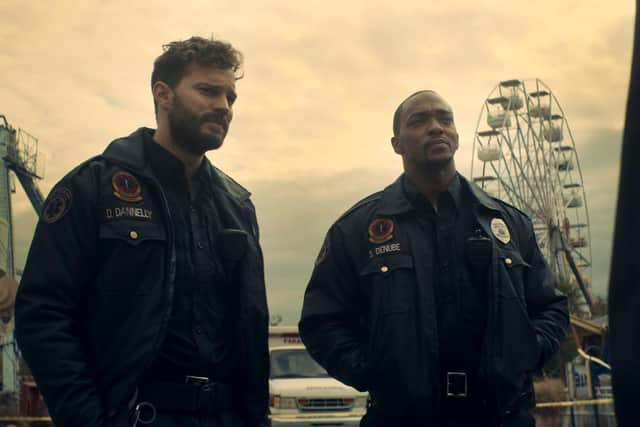"There’s an obligation to be weird" - The making of sci-fi horror movie Synchronic


If there’s a lesson that should be imparted to any aspiring filmmakers trying to break through with low-budget indie film it’s this: don’t be boring. Don’t just try to make a cheap version of the mainstream. “You should actually feel an obligation not to do that,” says filmmaker Justin Benson. “If you’re making an independent film, it should be bold, and it should feel personal. And it should feel maybe even kind of messy. There’s an obligation to be weird.”
Benson certainly knows a thing or two about this. He and his co-director and writing partner Aaron Moorhead have been building up quite the cult following over the last few years with a distinctive body of work that stands out precisely because it’s unafraid of taking wild creative swings. Their debut feature Resolution (2012) was a micro-budget addiction movie with a paranormal spin. Their follow-up Spring (2015) came on like a hipster romance before mutating into an inventive creature feature. Their 2017 breakthrough movie The Endless, meanwhile, was a head-spinning cosmic horror about a two brothers (played by Benson and Moorhead) who return to the UFO cult they escaped as children.
Advertisement
Hide AdTheir new movie Synchronic may be a (slight) step-up in scale and budget, but it very much continues this pattern. Starring Anthony Mackie and Jamie Dornan, it’s a sci-fi horror movie about a designer drug that enables users to time-travel into the past, albeit with mostly fatal consequences. Unlike a lot of time travel movies (Back to the Future, say, or even Tenet), it’s explicitly not interested in exploring the so-called “grandfather paradox” where messing with the past alters the future. “Those questions are fun, but all time-travel movies deal with them,” says Moorhead. “And most time-travel movies romanticise the past. Personally, we don't feel that almost any part of the past is better than the present. The idea that the past is somehow better is like a toxic drug in our culture. We liked the idea of the past being a monster.”


It’s thematic ideas like these, together with Benson and Moorhead's ability to find visually and narratively arresting ways to explore them, that make their films so distinctive. And appealing to stars like Mackie and Dornan who currently occupy a position in Hollywood many more rungs up the ladder than them. Dornan’s agent, though, had liked The Endless, so passed the script for Synchronic onto the 50 Shades of Grey star. With Mackie, who’s become an integral part of the Marvel Cinematic Universe, they reached out to a filmmaker friend, Joe Lynch, who was directing him in the Netflix movie Point Blank. Lynch kindly talked them up to Mackie, but they’ve also heard that Avengers directors Anthony and Joe Russo told Mackie he should work with them.
“We've never met the Russo brothers in our lives,” says Benson, “so I don't know if that's true. But I do just like this idea that the Russos come home from directing the Avengers and throw on Resolution just want to watch two people chatting in a cabin for 90 minutes.”
I tell them it’s actually not that implausible. The Russo brothers started their careers with an ultra low-budget, credit-card funded indie film, much like them, and they benefitted from Steven Soderbergh spotting their potential and helping progress their careers. It makes sense they’d look out for other up-and-coming directors.
“I did not know Soderbergh had a hand in their success,” says Moorhead. “That’s cool. I like that ‘keeping it in the family’ thing.”


Benson and Moorhead began their own little filmmaking team shortly after arriving in LA. Moorhead was starting an internship at Ridley Scott’s production company the day Benson was finishing his and so Benson was charged with showing him the ropes. “We just got talking about the kinds of stuff we liked,” recalls Moorhead, “which is probably pretty embarrassing stuff now.”
Advertisement
Hide Ad“I literally think we talked about 300,” laughs Benson, referencing the 2006 movie that made Gerard Butler a star. “We were like, ‘That’s a cool movie.’”
Mercifully, their shared love of film had deeper, more interesting roots. When he was eleven, Moorhead, who grew up in Florida, was introduced to stop motion animation by a school friend and his brother and was immediately hooked, saving up all his pocket-money to get a camera and then spending his spare time making stop motion Star Wars animations in his bedroom. “I was just obsessed,” he says.
Advertisement
Hide AdBenson grew up in San Diego and was into the usual teenage stuff that kids who grew up in San Diego were into: surfing, skateboarding, the punk scene. Then a girlfriend in high school introduced him to Pulp Fiction, Kevin Smith’s indie hit Chasing Amy and the original Texas Chainsaw Massacre and suddenly his world opened up. “I didn’t know that stuff existed,” he says. “There was something about seeing people using language like that made me think, ‘I maybe know how to do that.”
Even Texas Chainsaw Massacre?
“Yeah, it felt very achievable. With very little resources, it took you on a roller-coaster ride.”
“And in indie film that’s super-important to have those kinds of films,” chips in Moorhead. “Unless you’re super arrogant, I don’t think anybody watches a movie like The Lord of the Rings and thinks, ‘I could do that. I’m going to be a director.’ But if you watch a movie like Evil Dead…”
Or Peter Jackson’s early horror movies…
“Exactly – you can look at it and go, 'I see exactly how that’s made.'”
Though there’s a lot of uncertainty about how the pandemic will affect the future of cinema, Synchronic suggests Benson and Moorhead are in a good position to do what they want on their own terms. They’re currently in the final stages of a new script and while they’ll occasionally go to meetings with studios to discuss doing a big franchise movie, “and get turned down” laughs Benson, a big mainstream breakthrough seems as inevitable as some kid discovering their work in the future and being inspired to make bold, smart, weird movies of their own.
Synchronic is released in cinemas and on digital on 29 January
A message from the Editor
Advertisement
Hide AdThank you for reading this story on our website. While I have your attention, I also have an important request to make of you.
The dramatic events of 2020 are having a major impact on many of our advertisers - and consequently the revenue we receive. We are now more reliant than ever on you taking out a digital subscription to support our journalism.
To subscribe to scotsman.com and enjoy unlimited access to Scottish news and information online and on our app, visit https://www.scotsman.com/subscriptions
Joy Yates, Editorial Director